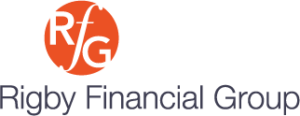Wait! Why it Doesn’t Make Sense to Apply for PPP Loan Forgiveness Yet

If you received the proceeds of a Paycheck Protection Program (PPP) loan in April or early May of 2020, and have not elected a 24-week covered period over the 8-week period you assumed you’d have, then you are done, and should apply for forgiveness as early as possible, to get the process completed, right?
Well, not really. There are a number of factors which, taken together, make it wiser to wait, at least for now, before applying for PPP loan forgiveness from the U.S. Small Business Administration (SBA).
-
The SBA and the U.S. Treasury Department haven’t yet issued final guidance on the loans or on forgiveness.
-
Many lenders have not finalized their own technological processes for applying – they are awaiting the SBA and Treasury guidance before they can be sure their tools are accurate and compliant.
-
In a similar vein, many payroll processors are preparing specifically-designed reports which borrowers will be able to use to support their loan forgiveness applications. Like lenders, they await final guidance.
-
Loan recipients who can use the 24-week period, which became optional for those who received loans before June 5, 2020 (the date President Trump signed the Paycheck Protection Program Flexibility Act into law) may find it allows them to meet the relaxed 60% payroll-related expense threshold for full forgiveness of the loan. Obviously, if it benefits you to use the longer covered period, you are going to do that.
-
There’s no need to rush. Borrowers are not required to make any payment on the loan until either a) they apply for loan forgiveness, or b) 10 months have passed since their covered period has ended. For those choosing a 24-week covered period, that means they have almost 16 months from receipt of the loan proceeds. For those with 8-week covered periods, it’s still nearly a year between receipt of funds and the requirement to repay or apply for loan forgiveness.
And it may be that for a good many of us, the process won’t be as daunting as it originally appeared it would be.
We’ve previously referenced (and linked to) Form 3508EZ and its Instructions.
This form can be used by PPP loan recipients who meet one of three criteria:
-
Borrower is self-employed, an independent contractor, or a sole proprietor who had no employees at the time they applied for the PPP loan and included no employee salaries in calculating their average payroll amount when applying.
-
Borrower did not reduce salaries or hourly wages by over 25% during the covered period (whether 8-week or 24-week) compared with the period of January 1 through March 31, 2020 (employees who earned over $100,000 annualized at any point during 2019 do not count for this purpose); AND did not reduce the number or the average paid hours of their employees between January 1, 2020, and the end of their covered period. For purposes of this criterion, employees at February 15, 2020, who left their positions either through layoff or voluntarily, and refused a good-faith offer of rehire, do not count. Nor do they count if the borrower was unable to fill the position with a similarly qualified individual.
-
Borrower did not reduce salaries or wages by more than 25% during the covered period compared with the period of January 1 through March 31, 2020, AND was unable to operate at the same level of business activity as before February 15, 2020, due to compliance with health and safety regulations relating to COVID-19.
In any event, it makes sense to wait, at least until the SBA and Treasury give us final guidance, to apply for PPP loan forgiveness. So much has changed since the initial “rules” were established, and it cannot be certain that the “Interim Final Rules” currently in force (as amended, in most cases) will remain “Final.”
Additionally, the SBA resumed accepting new PPP Loan applications on July 7, 2020, and will continue to do so through August 8, 2020. In the process of reviewing applications, the SBA may find additional changes it thinks should be made to the forgiveness procedures.
Stay tuned – if there is one thing we are sure of, it is that this is not the final word on PPP loans.
If you have questions on the PPP, please click here to email us directly – we are here to help.
Until next Wednesday –
Peace,
Eric
